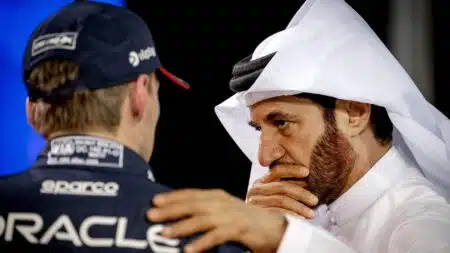
F1 snore-fest shows new cars badly needed: Up/Down Japanese GP
The 2025 Japanese GP showed a much more extreme change than next year's technical regulations is needed to make racing at classic F1 tracks interesting
No more double points, and no more WTCC
The World Endurance Championship has officially switched to its ‘superseason’ format and adopted a revised points system from 2018.
Le Mans will no longer be worth double points, instead being worth 50 per cent more than the usual six-hour races. Sebring, which returns to the WEC calendar with a 1500-mile race, will be worth an additional 25 per cent. The season begins at Spa-Francorchamps in May 2018, and ends at Le Mans in June 2019.
The LMP1 teams will now fight for the title, rather than the manufacturers, owing to Toyota being the sole remaining factory team. The FIA has also ratified the equivalence of performance has been ratified, which should mean Toyota will be fighting the privateer Ginettas, Dallara-built SMP/BR1, ByKolles and others. It has also been confirmed that manufacturers can enter branding partnerships with non-hybrid privateers under ‘certain conditions’, which have not been fully outlined.
The current cars will remain eligible for three years, including the first year of the as-yet-undefined 2020 regulations
In another tweak, pitstops are being made ‘more dramatic’ – crews can work on cars while refuelling, as seen in IMSA.
In touring cars, the World Touring Car Championship has merged with TCR to for the WTCR, World Touring Car Cup, while the European Touring Car Cup will no longer exist. The series will run to TCR regulations and will be frozen until 2019 – with no manufacturer teams allowed. Therefore, WTCR does not have world championship status.
6 Hours of Spa-Francorchamps: May 5 2018
24 Hours of Le Mans: June 16-17 2018
6 Hours of Silverstone: August 19 2018
6 Hours of Fuji: October 21 2018
6 Hours of Shanghai: November 18 2018
1500 Miles of Sebring: March 17 2019
6 Hours of Spa-Francorchamps: May 4 2019
24 Hours of Le Mans: June 15-16 2019

The 2025 Japanese GP showed a much more extreme change than next year's technical regulations is needed to make racing at classic F1 tracks interesting

Max Verstappen looks set to be pitched into a hectic, high-stakes battle for F1 victories in 2025, between at least four teams. How will fans react if he resorts to his trademark strongman tactics?

Red Bull has a new team-mate for Max Verstappen in 2025 – punchy F1 firebrand Liam Lawson could finally be the raw racer it needs in the second seat

The 2024 F1 season was one of the wildest every seen, for on-track action and behind-the-scenes intrigue – James Elson predicts how 2025 could go even further